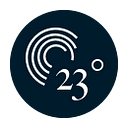## für Deutsche Version nach unten scrollen ##
Our newest feature lets you create customized interactive maps with markers.
Earlier this week we’ve introduced a new type of map, that lets you point to a certain event or location, without referring to a specific administrative area, as for example a choropleth map would require.
To build a locator map you first have to create a regular choropleth map or you can pick an already existing map, as we have done in this example. To get started with you locator map go to Annotations.
Now klick the +CREATE MARKER button to place a marker on the map.
(You can also upload or drag and drop a JSON file with coordinates)
Move the marker by drag and drop or type in the coordinates (longitude and latitude) of the location you’d like to highlight.
Pro tip: If you want to duplicate a marker, klick on the icon next to it and you will get an exact copy of the marker. This is really helpful when creating a lot of similar or same looking markers.
Once you’ve placed your marker(s) you can start editing them!
We have a wide range of styling options so the following list will only be a short summary of what our most important features are all about.
1. Symbol
You can choose from a range of different symbols to illustrate the event or location you want to point to. (In a next step, you will also be able to upload and create customized symbols).
2. Text (Annotation)
This feature allows you to put a brief text-annotation next to the marker you’ve set. For example the name of the place or the date of the event you have pinned on the map.
3. Line
Lines are helpful to highlight which annotation belongs to which marker. They can come in all different kinds of shapes and sizes: Dashed, solid, dotted, bent or straight, with arrows or without them. They will adapt, depending on how you pan and zoom on the map.
4. Tooltip
Just like with all the other types of charts we offer, our locator maps allow you to add tooltips to every marker you’ve placed on the map. This will give you extra space for additional information (text, images, links) on your location.
Those are the 4 basic functions you need to know about in order to create a solid locator map.
Now, there are of course a lot more features and ways to style and customize your locator map, but this would go beyond the scope of one blog entry that’s why…in the upcoming post we will discuss Clusters and Filters for locator maps.
Meanwhile we recommend you just go for it and try to build your own locator map at: https://app.23degrees.io/
Follow us
twitter: @23degrees_io
fb: @23degrees.io
ig: @23degrees_io
##Deutsche Version##
#Wie erstelle ich Locator-Maps mit 23 Grad?
Mit unserer neuesten Funktion können interaktive Karten mit benutzerdefinierten Markern/Pins erstellt werden.
Letzte Woche haben wir einen neuen Kartentyp verfügbar gemacht, mit dem man auf ein bestimmtes Ereignis oder einen bestimmten Ort verweisen kann, ohne sich auf einen vordefinierte Verwaltungsbereich beziehen zu müssen, wie dies zum Beispiel für eine Choroplethenkarte der Fall ist.
Um eine Locator-Map zu erstellen, muss zuerst eine reguläre Choroplethenkarte erstellt werden. Alternativ kann auch von einer bereits vorhandenen Karte wegarbeitet werden, wie wir es in diesem Beispiel getan haben.
Durch einen Klick auf Annotations kann mit dem Erstellen einer Locator-Map begonnen werden.
Klicke nun auf den + CREATE MARKER Button, um einen Marker auf der Karte zu platzieren. (Alternativ kann auch eine JSON-Datei mit Koordinaten hochgeladen werden.)
Die Marker können dann noch per Drag & Drop verschoben werden oder man gibt die Koordinaten (Längen- und Breitengrad) des Ortes ein, der angezeigt werden soll.
Pro-Tipp: Ein Marker kann dupliziert werden, indem man auf das entsprechende Icon klickt. So erhält man eine exakte Kopie des Markers. Dies ist sehr hilfreich, wenn man sehr viele ähnlich oder gleich aussehende Marker erstellen möchte.
Sobald die Marker platziert sind, könne sie bearbeitet und gestylt werden.
Wir haben eine große Auswahl an Styling-Optionen, die folgende Liste enthält erst einmal nur eine kurze Zusammenfassung der wichtigsten Funktionen.
1. Symbol
Wähle aus aus einer Reihe verschiedener Symbole, um das Ereignis oder den Ort zu veranschaulichen, auf den gezeigt wird. (In einem nächsten Schritt können auch benutzerdefinierte Symbole hochgeladen und erstellt werden.)
2. Text (Annotation)
Mit dieser Funktion kannst Du eine kurze Textanmerkung neben die festgelegte Markierung setzen, zum Beispiel den Namen des Ortes oder das Datum eines Ereignisses, das an diesem Ort stattgefunden hat.
3. Linie
Linien sind hilfreich, um hervorzuheben, welche Anmerkung zu welchem Marker gehört. Es gibt sie in allen möglichen Formen und Größen: gestrichelt, durchgehend, gepunktet, gebogen oder gerade, mit oder ohne Pfeil. Sie passen sich an, je nachdem, wie die Karte bewegt wird.
4. Tooltip
Wie bei allen anderen von uns angebotenen Chart-Typen könnt ihr auch bei den Locator-Maps jedem Marker, den ihr auf der Karte platziert habt, ein Tooltip hinzufügen. Dies gibt euch zusätzlichen Platz für Informationen (Text, Bilder, Links).
Das sind die 4 Grundfunktionen, die man kennen sollte, um eine einfache Locator-Map zu erstellen.
Natürlich gibt es noch viele weitere Funktionen und Möglichkeiten, um Locator-Maps zu gestalten und anzupassen. Dies würde allerdings den Rahmen eines einzigen Blogeintrags sprengen, weshalb… wir im nächsten #HowTo näher auf Cluster und Filter für Locator-Maps eingehen werden.
In der Zwischenzeit werft doch einen Blick auf https://app.23degrees.io/ und gestaltet eure erste Locator-Map.
Follow us
twitter: @23degrees_io
fb: @23degrees.io
ig: @23degrees_io
